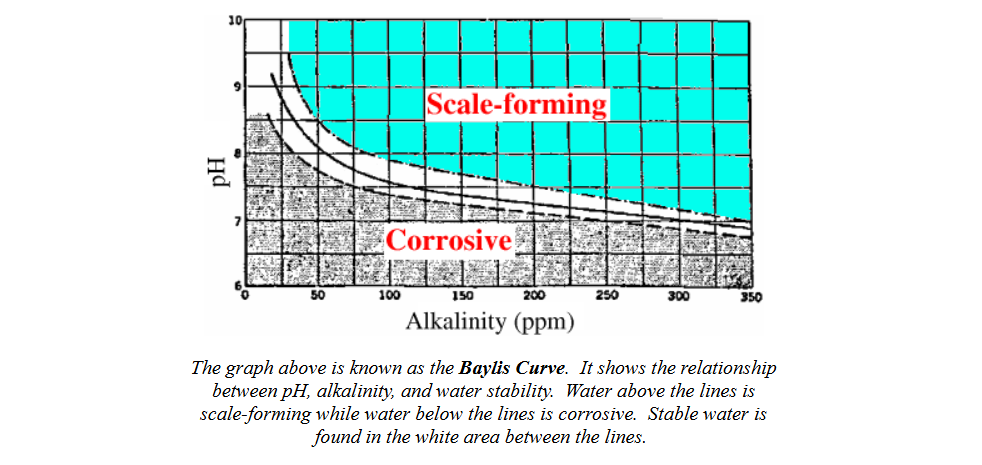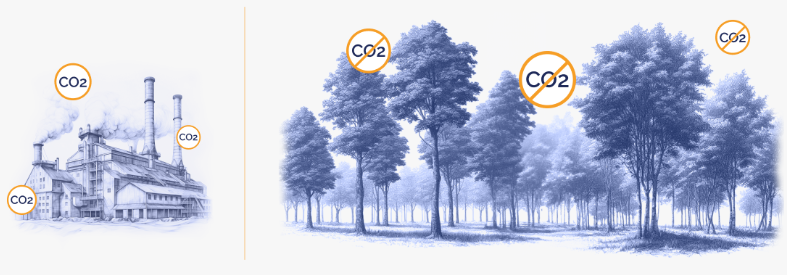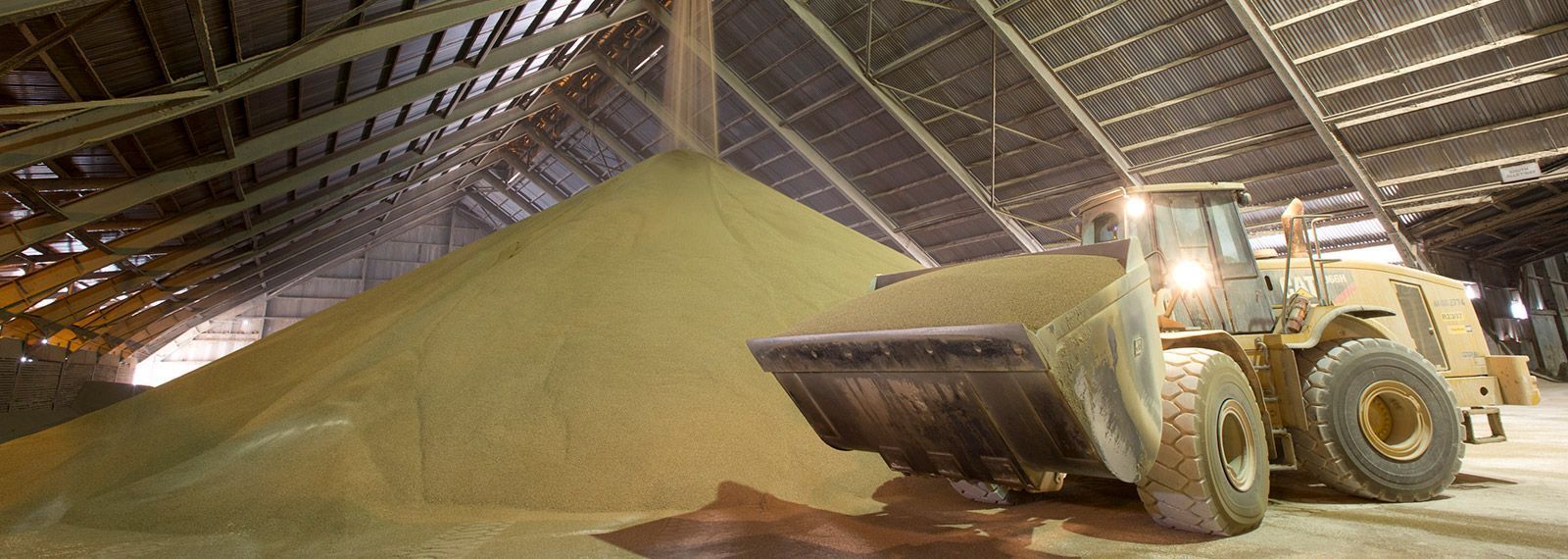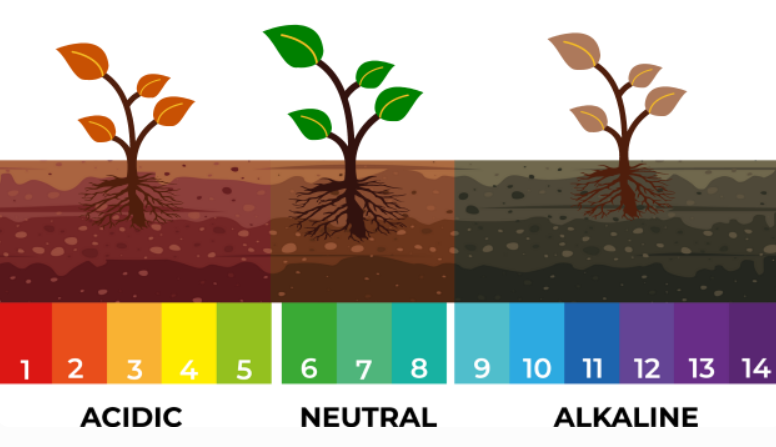Corrosion Control in Industry: How Phosphates Protect Equipment
Corrosion is one of the most persistent and costly challenges facing modern industry. At its core, corrosion is a natural process in which metals deteriorate due to chemical reactions with their environment - most often involving oxygen and moisture. Left unchecked, it steadily erodes pipelines, machinery, storage tanks and other critical infrastructure. While corrosion may seem like a gradual process, its consequences in industrial settings can be both rapid and severe.
The economic
impact of corrosion is staggering. Global studies estimate that corrosion-related damage costs industries billions of dollars annually in maintenance, replacement and lost productivity. For companies, this often translates into unplanned downtime, expensive repairs, and shortened equipment lifespans. Beyond the financial toll, corrosion also carries serious safety risks. Equipment failure caused by corroded components can lead to leaks, fires, contamination, and even catastrophic accidents - putting both workers and surrounding communities at risk. For sectors such as oil and gas, water treatment, chemical processing, and power generation, controlling corrosion is not just about protecting investments, but also about ensuring safety and reliability.
One of the most effective and widely adopted strategies for combating corrosion is the use of phosphates. These versatile compounds act as corrosion inhibitors by forming
protective layers
on metal surfaces, reducing direct contact between the metal and corrosive agents. Phosphates not only help extend the life of industrial equipment but also improve operational efficiency and reduce long-term costs. In this article, we will explore how phosphates function as corrosion control agents and why they remain indispensable in modern industry.
Understanding Corrosion in Industrial Equipment
What is Corrosion?
Corrosion is the gradual destruction of metals caused by chemical or electrochemical reactions with their environment. At its simplest, it occurs when a metal surface reacts with oxygen and moisture, creating rust or other oxides. The process is electrochemical: some areas of the metal surface act as anodes and lose electrons, while others act as cathodes and gain them. This electron flow, combined with the presence of water and dissolved salts, accelerates the breakdown of metal.
There are several types of corrosion that industries must manage:
- Pitting corrosion – small, localized holes that can penetrate deep into metal, often unnoticed until failure occurs.
- Galvanic corrosion – occurs when two dissimilar metals are in electrical contact within a corrosive environment, causing one metal to corrode faster.
- Crevice corrosion – happens in confined spaces such as joints, gaskets, or under deposits where stagnant conditions intensify attack.
Industries Most Affected
While corrosion can appear anywhere metals are used, certain industries are especially vulnerable:
- Oil & Gas – pipelines, rigs, and refineries are constantly exposed to harsh environments containing saltwater, CO₂, and hydrogen sulfide.
- Water Treatment – equipment and distribution systems face continuous contact with treated water and chemicals.
- Power Generation – boilers, turbines, and cooling systems must withstand high temperatures, pressure, and water chemistry.
- Manufacturing – machinery, storage tanks, and structural elements are at risk from both atmospheric conditions and process chemicals.
Consequences of Uncontrolled Corrosion
When corrosion is left unmanaged, the consequences can be severe:
- Equipment degradation leads to reduced efficiency and unexpected failures.
- Operational downtime disrupts production schedules and supply chains.
- Increased maintenance costs arise from frequent repairs, replacements, and safety inspections.
This combination makes corrosion control a vital priority for any industry relying on metal infrastructure.
What Are Phosphates?
Chemical Nature of Phosphates
Phosphates are a group of inorganic chemical compounds that contain phosphorus, a vital element found in both natural and industrial systems. Chemically, they consist of a phosphorus atom bonded to oxygen atoms, forming phosphate ions (PO₄³⁻) and related structures. These compounds are stable, reactive, and highly versatile, which makes them valuable across a wide range of applications, from fertilizers and food additives to industrial corrosion control.
Types Used in Industry
Several types of phosphates are commonly applied in industrial processes, each with unique properties and benefits:
- Orthophosphates – The simplest form, consisting of single phosphate units. They are effective at forming protective films on metal surfaces, making them useful in water treatment and corrosion prevention.
- Polyphosphates – Chains of phosphate units linked together. They are widely used as sequestering agents, preventing scale formation and enhancing corrosion protection in complex water systems.
- Organophosphates – Compounds in which phosphate groups are bonded to organic molecules. They offer specialized applications in lubrication, flame retardancy, and surface treatment.
Why Phosphates Are Chosen
Phosphates remain a preferred choice in industry due to their balance of effectiveness and practicality. They are cost-effective, providing reliable protection at relatively low dosages. Their versatility allows them to serve multiple roles - from preventing scale and corrosion to stabilizing water chemistry. Finally, phosphates are backed by decades of proven safety and performance, making them a trusted solution in industries where both equipment reliability and regulatory compliance are critical.
Mechanism: How Phosphates Prevent Corrosion
Protective Film Formation
One of the primary ways phosphates protect metals is through the formation of insoluble protective films on equipment surfaces. When phosphate ions are introduced into water systems or come into contact with metal, they react with metal cations such as calcium, iron or zinc. This reaction produces stable, adherent compounds like metal phosphates. These compounds deposit on the metal surface, filling microscopic cracks and pores. The result is a thin but resilient barrier that physically separates the metal from corrosive agents like oxygen and moisture.
Passivation Layer
Beyond simple film formation, phosphates also contribute to the passivation of metal surfaces. Passivation is the process by which a surface becomes less chemically reactive. The phosphate-induced layer effectively blocks oxygen, chloride ions, and other aggressive species from reaching the bare metal. This barrier reduces the rate of electrochemical reactions that drive corrosion. Unlike coatings that may peel or crack, phosphate layers tend to self-heal to a certain extent, re-forming if minor surface damage occurs, which ensures long-lasting protection.
Control of Water Chemistry
Phosphates also play an indirect but crucial role in stabilizing water chemistry, particularly in industrial water treatment systems. By buffering pH levels, phosphates help maintain conditions that are less corrosive to metals. For example, highly acidic water accelerates metal dissolution, while alkaline conditions can encourage scale deposits. Phosphates balance these extremes by moderating pH and preventing scaling, ensuring that equipment surfaces remain stable and less susceptible to attack. This dual action, corrosion inhibition and scale control, makes phosphates especially valuable in cooling towers, boilers and distribution pipelines.

Synergy with Other Corrosion Inhibitors
Phosphates are often used in combination with other inhibitors to create synergistic protection systems. When paired with zinc salts, molybdates, or specialized polymers, phosphates enhance film formation and improve resistance to localized forms of corrosion such as pitting and crevice attack. For instance, zinc ions can co-deposit with phosphate layers, strengthening the protective film, while molybdate provides additional anodic inhibition. Polymers, meanwhile, disperse deposits and improve phosphate efficiency. This collaborative approach allows industries to tailor corrosion control programs to their specific systems, maximizing both performance and cost-effectiveness.
Through these combined mechanisms, phosphates provide reliable, adaptable, and long-lasting protection against one of the most costly challenges in industrial operations.
Applications of Phosphate-Based Corrosion Control
Cooling Towers & Boilers
In power generation and large industrial facilities, cooling towers and boilers are essential for heat management. However, the constant circulation of water exposes metal components to both scaling and corrosion. Phosphate treatment is widely applied in these systems because it offers a dual benefit: preventing scale deposits and forming protective films on steel and copper surfaces. By stabilizing water chemistry and buffering pH, phosphates help maintain system efficiency, reduce energy losses, and extend the service life of equipment.
Oil & Gas Pipelines
In the oil and gas sector, pipelines transport crude oil, natural gas, and refined products over long distances. Internal corrosion is a major threat, driven by water, CO₂, hydrogen sulfide, and other contaminants in the transported stream. Phosphate-based inhibitors are often introduced into pipeline fluids, where they react with the inner pipe wall to create a protective layer. This reduces the risk of leaks, ruptures, and costly downtime. By mitigating both uniform and localized corrosion, phosphates help maintain pipeline integrity and reduce the likelihood of environmental and safety hazards.
Municipal Water Systems
Municipal water distribution networks rely on phosphates to protect both infrastructure and consumers. In drinking water systems, orthophosphates are added to form a stable film on the interior surfaces of pipes. This film minimizes metal leaching—such as lead and copper—into the water supply while also preventing corrosion of iron pipes that can cause discoloration and taste issues. Phosphate treatment is valued for its ability to ensure regulatory compliance, protect public health, and extend the life of costly distribution infrastructure.
Food & Beverage Industry
The food and beverage industry demands corrosion control solutions that safeguard equipment without compromising product quality. Phosphate-based treatments are well-suited for this purpose. They protect stainless steel, copper, and other materials used in processing equipment, storage tanks, and piping systems. Importantly, phosphates are recognized as safe and effective in regulated dosages, ensuring that protective measures do not interfere with food safety or taste. This enables manufacturers to maintain high standards of hygiene, equipment reliability, and production efficiency.
Advantages and Limitations of Using Phosphates
Advantages
Phosphates have remained a cornerstone of industrial corrosion control for decades due to their cost efficiency. They deliver effective protection at relatively low dosages, making them an economical choice for industries that manage large-scale systems like cooling towers, pipelines, and municipal water networks.
Another key strength is their proven long-term effectiveness. Phosphates reliably form stable protective films that reduce corrosion rates and extend equipment life, resulting in fewer repairs, reduced downtime, and lower maintenance costs. Their track record across industries such as power generation, oil and gas, and water treatment highlights their durability and consistency.
Finally, phosphates are generally environmentally acceptable in controlled use. Regulatory bodies recognize their safety when applied within set limits, particularly in drinking water systems, where they also help minimize lead and copper leaching. This makes phosphates a practical and trusted option where both performance and compliance matter.
Limitations
Despite these advantages, phosphates are not without challenges. One concern is their contribution to environmental issues if overused, particularly eutrophication in natural water bodies. Excess phosphate discharge can encourage algal blooms, which deplete oxygen and disrupt aquatic ecosystems. For this reason, strict monitoring and optimized dosing are essential.
In addition, phosphates are not suitable for all water chemistries. Certain conditions, such as very high hardness or aggressive scaling tendencies, may limit their effectiveness or require supplemental treatment. In such cases, phosphates are best used as part of a tailored corrosion control program, often in synergy with other inhibitors.
Best Practices for Implementing Phosphate Corrosion Control
Effective use of phosphates in corrosion prevention requires more than simply adding them to a system. To maximize their benefits while minimizing risks, industries follow several best practices.
Dosage optimization is the first step. Applying too little phosphate will result in inadequate protection, while overdosing can lead to scaling, wasted chemicals, and environmental concerns. Careful calculation based on system size, water chemistry, and operating conditions ensures optimal performance.
Equally important is regular monitoring of water chemistry. Parameters such as pH, hardness, alkalinity, and phosphate concentration must be routinely measured to confirm that conditions remain within the target range. Monitoring allows for timely adjustments and helps avoid both underperformance and unnecessary chemical use.
Phosphates are most effective when used as part of a comprehensive treatment program. Combining them with other inhibitors—such as zinc salts, molybdate, or polymers—enhances protection against
localized corrosion and scaling. This integrated approach tailors protection to specific industrial needs.
Finally, adherence to industry standards and regulations is essential. Guidelines from organizations like ASTM and NACE provide frameworks for safe and effective phosphate application, while ensuring compliance with environmental and safety regulations. Following these standards promotes consistent results and long-term system reliability.
Future Trends in Corrosion Control with Phosphates
The role of phosphates in corrosion control is evolving as industries seek more sustainable and efficient solutions. One key direction is green chemistry innovations, where research focuses on reducing environmental impact while maintaining effectiveness. This includes developing phosphate formulations that minimize discharge and improve biodegradability.
Another trend is the use of phosphate blends with sustainable inhibitors. By combining phosphates with eco-friendly additives such as organic polymers, molybdate alternatives, or plant-based compounds, industries can achieve strong corrosion protection while lowering reliance on traditional chemicals. These hybrid solutions offer both performance and improved environmental compatibility.
Finally, the integration of smart monitoring technology is transforming how phosphates are applied. Advanced sensors and real-time data analytics allow operators to continuously track water chemistry, adjust phosphate dosages, and predict corrosion risks before they escalate. This shift toward predictive maintenance enhances efficiency, reduces waste, and ensures long-term equipment protection.
FAQs on Phosphates in Corrosion Control
Are phosphates safe for potable water systems?
Yes. Orthophosphates are widely approved for use in drinking water systems. They help prevent lead and copper leaching from pipes, ensuring both safety and regulatory compliance when applied within recommended limits.
Do phosphates work in high-temperature applications?
Phosphates can be effective in many high-temperature systems, such as boilers, but their stability depends on conditions. In extremely high heat, alternative inhibitors or blended treatments may be required to maintain protection.
How often should phosphate levels be monitored?
Regular monitoring is essential. In most industrial water systems, phosphate levels should be checked weekly or even daily in critical operations. Frequent testing ensures optimal dosage and prevents under- or overdosing.
Can phosphates eliminate corrosion?
No treatment can fully eliminate corrosion, but phosphates significantly reduce its rate and severity. When combined with other inhibitors and good maintenance practices, they extend equipment life and improve reliability.
What are eco-friendly alternatives to phosphates?
Emerging alternatives include organic polymers, silicates, and “green” corrosion inhibitors derived from natural compounds. These are often blended with phosphates to balance performance with environmental sustainability.
Conclusion
Corrosion remains one of the most significant challenges in industrial operations, affecting equipment longevity, operational efficiency and safety. Left unmanaged, it can lead to costly repairs, unplanned downtime, and even hazardous incidents. Phosphate-based corrosion control offers a proven and versatile solution, combining chemical protection with operational practicality. By forming protective films, passivating metal surfaces, and stabilizing water chemistry, phosphates help industries - from power generation and oil & gas to municipal water systems and food processing - safeguard critical infrastructure.
While phosphates provide cost-effective and reliable protection, their use requires careful planning, regular monitoring, and adherence to industry standards to ensure optimal performance and environmental compliance. Advances in green chemistry, phosphate blends with sustainable inhibitors, and smart monitoring technologies are shaping the future of corrosion control, allowing operators to achieve both efficiency and sustainability.
For companies seeking high-quality phosphate solutions, partnering with a trusted supplier is essential.
DECACHEM, with its experience in supplying industrial-grade phosphates, delivers reliable products that meet rigorous safety and performance standards. By integrating phosphate-based corrosion control with best practices and advanced monitoring, industries can minimize risks, extend equipment life, and maintain operational efficiency. Phosphates remain a cornerstone of corrosion prevention, helping industries protect their assets today while preparing for a sustainable future.
















